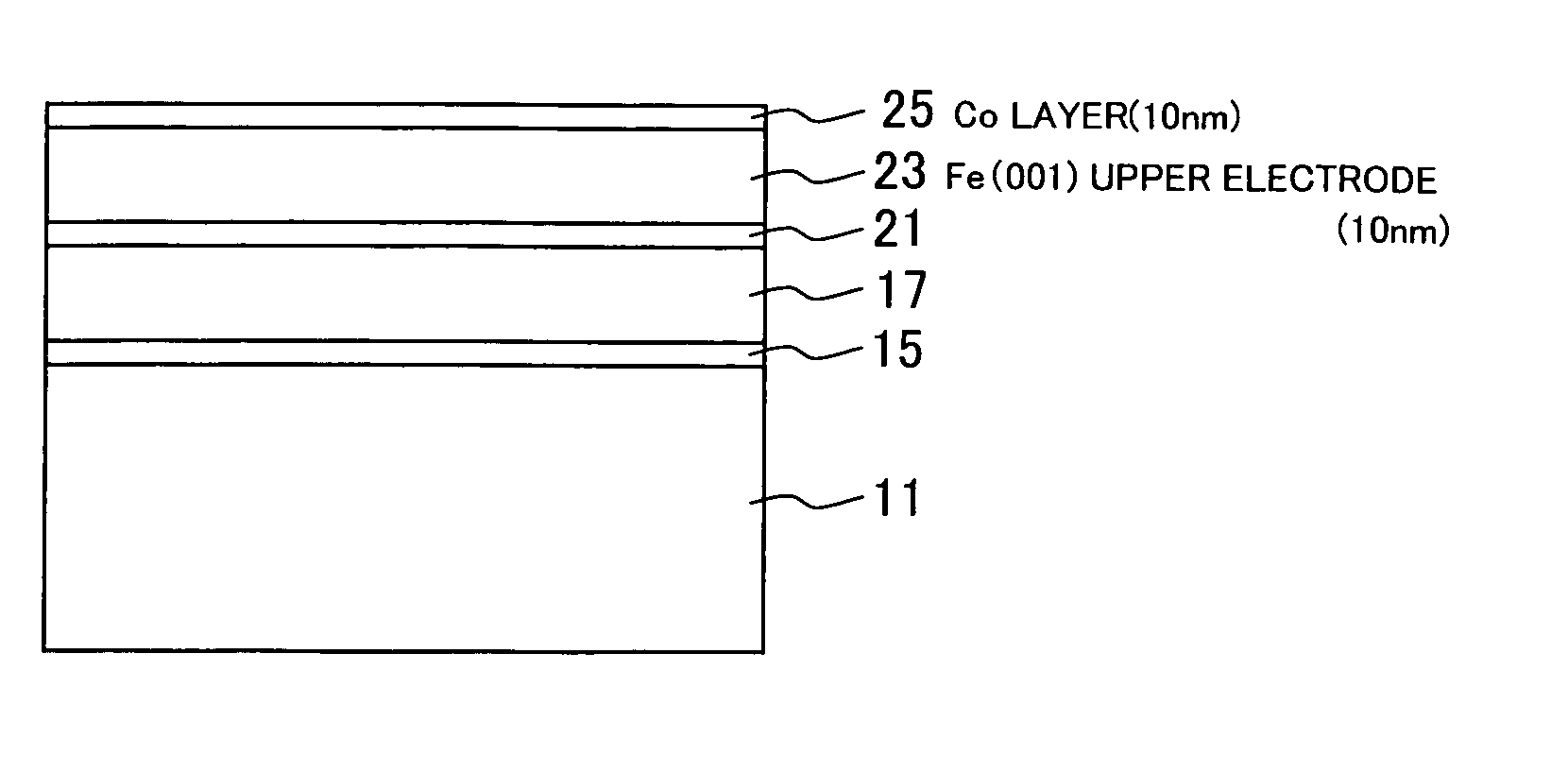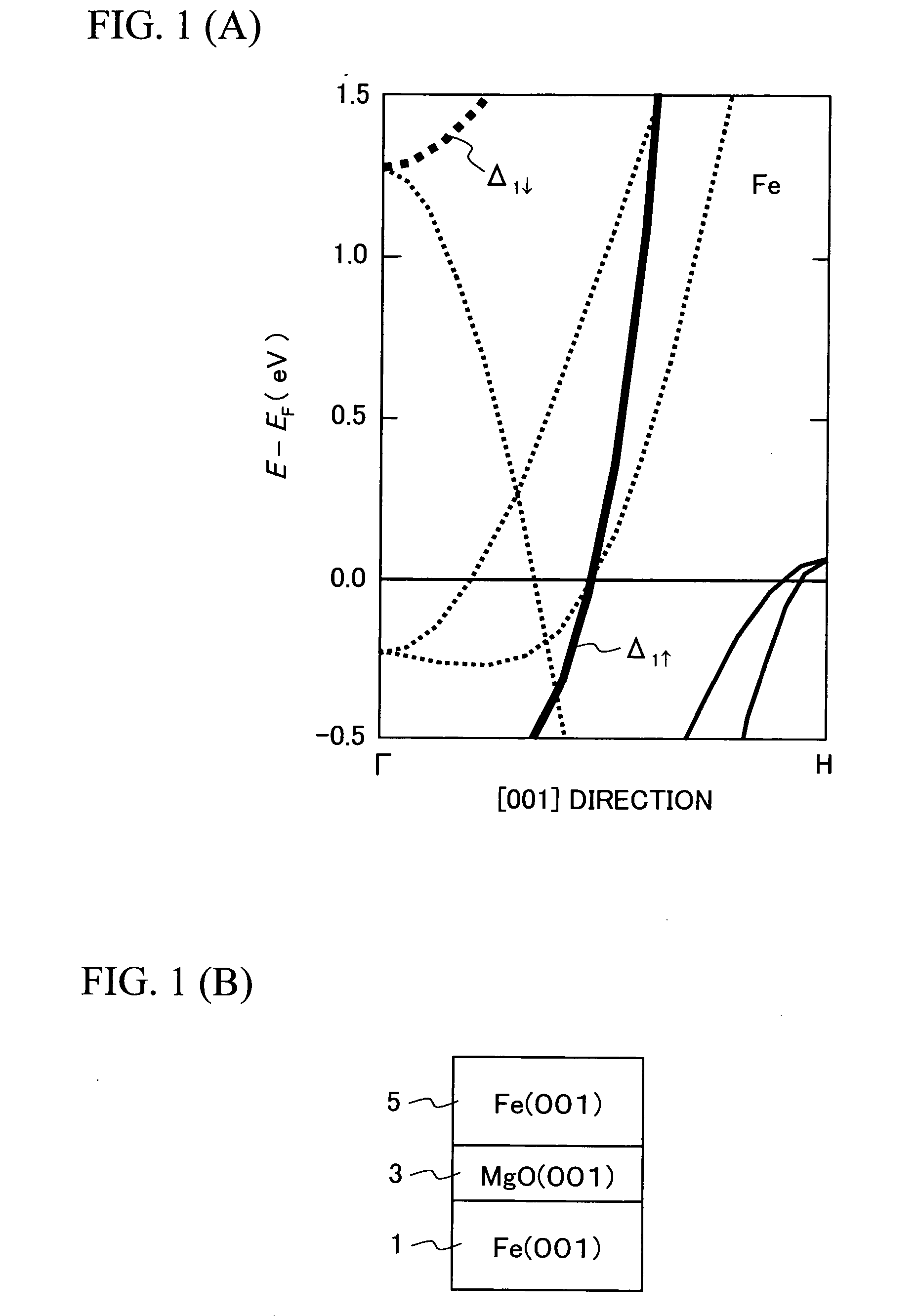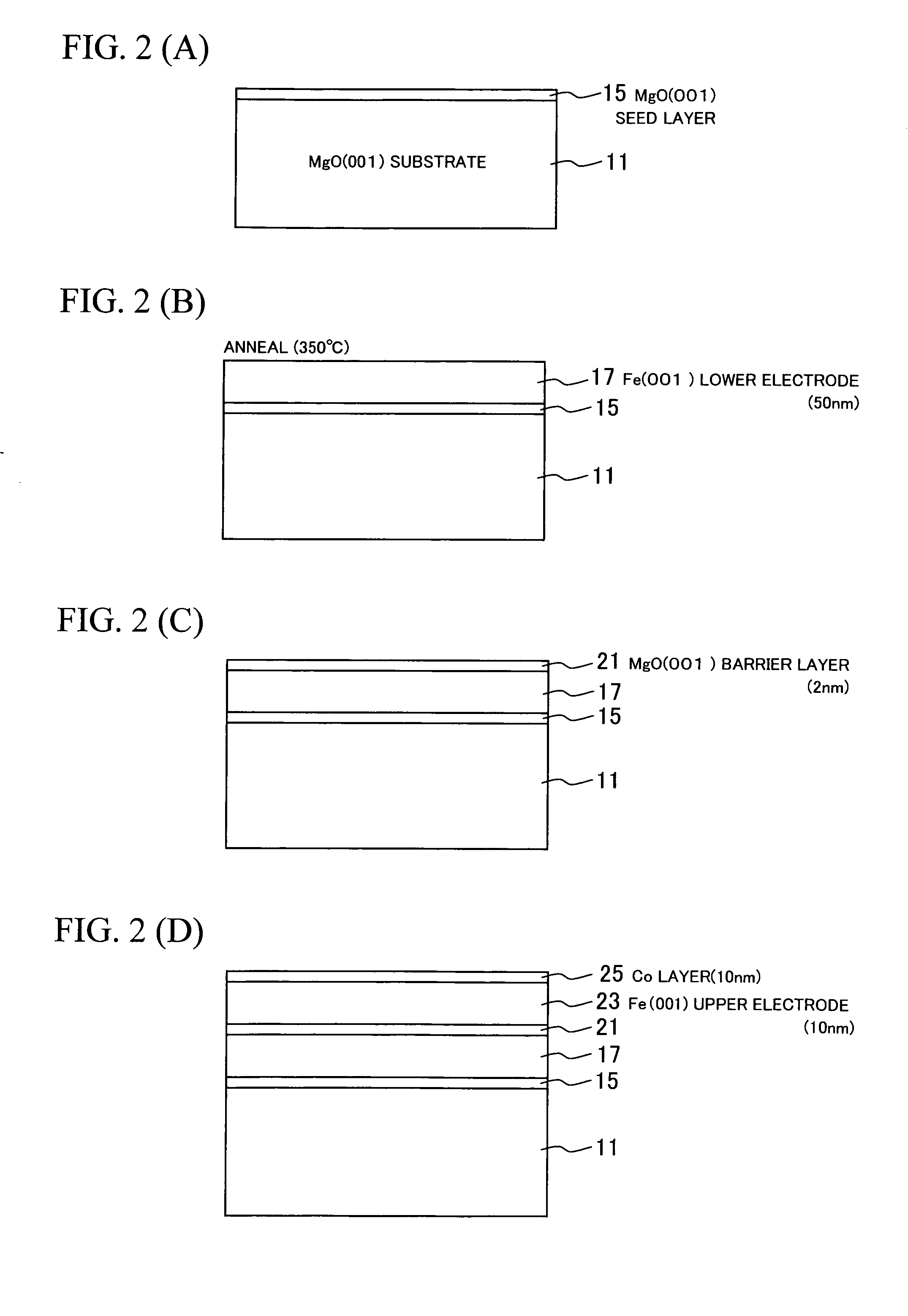Magnetic tunnel junction device and method of manufacturing the same
a tunnel junction and magnetic tunnel technology, applied in the direction of magnetic field-controlled resistors, digital storage, instruments, etc., can solve the problems of inability to read signals, signal loss in noise, and too small output voltage when operating margins are considered for the device to be employed for an actual memory device, etc., to achieve easy higher integration, increase the output voltage of the mtj device, and achieve greater magnetoresistance
- Summary
- Abstract
- Description
- Claims
- Application Information
AI Technical Summary
Benefits of technology
Problems solved by technology
Method used
Image
Examples
first embodiment
[0056] In the following, a MTJ device according to the invention and a method of manufacturing the same will be described with reference to the drawings. FIGS. 2(A) to 2(D) schematically show the method of manufacturing the MTJ device having the Fe (001) / MgO(001) / Fe(001) structure according to the embodiment (to be hereafter referred to as a “Fe(001) / MgO(001) / Fe(001) MTJ device”). Fe(001) refers to a ferromagnetic material with the BCC structure. First, a single-crystalline MgO(001) substrate 11 is prepared. In order to improve the morphology of the surface of the single-crystalline MgO(001) substrate 11, a MgO(001) seed layer 15 is grown by the molecular beam epitaxy (MBE) method. This is followed by the growth of an epitaxial Fe(001) lower electrode (first electrode) 17 with a thickness of 50 nm on the MgO(001) seed layer 15 at room temperature, as shown in FIG. 1(B). Annealing is then performed at 350° C. under ultrahigh vacuum (2×10−8 Pa). The electron-beam evaporation condition...
second embodiment
[0062] Hereafter, a magnetic tunnel junction device according to the invention and a method of manufacturing the same will be described. In the method of manufacturing a the Fe (001) / MgO (001) / Fe (001) MTJ device according to the present embodiment, MgO(001) is initially deposited in a poly-crystalline or amorphous state by sputtering or the like, and then an annealing process is performed such that a polycrystal in which the (001) crystal plane is oriented or a single crystal is obtained. The sputtering conditions were such that, for example, the temperature was room temperature (293K), a 2-inch φ MgO was used as a target, and sputtering was conducted in an Ar atmosphere. The acceleration power was 200 W and the growth rate was 0.008 nm / s. Because MgO deposited under these conditions is in an amorphous state, a crystallized MgO can be obtained by increasing the annealing temperature to 300° C. from room temperature and maintaining that temperature for a certain duration of time.
[00...
third embodiment
[0067] Hereafter, a MTJ device according to the invention will be described with reference to the drawings.
[0068] As already described above, output voltage can be increased by improving the bias voltage dependence or Vhalf of the MTJ device. In order to increase the Vhalf value of a MTJ device having an MgO (001) tunneling barrier, it is effective to lower the density of dislocation defects that exist at the interface between the MgO (001) tunnel barrier layer and the ferromagnetic metal electrode layer. FIG. 11(a) and (b) show cross-sectional transmission electron microscope images of the interface between a single-crystalline Fe (001) electrode layer and a single-crystalline MgO (001) tunnel barrier layer. In these images, dislocation defects can be observed at the interface. Such dislocation defects at the interface inevitably exist to a greater or smaller degree when the lattice constants (interatomic spacings) of the two layers are different. In the case of the interface betwe...
PUM
 Login to View More
Login to View More Abstract
Description
Claims
Application Information
 Login to View More
Login to View More - R&D
- Intellectual Property
- Life Sciences
- Materials
- Tech Scout
- Unparalleled Data Quality
- Higher Quality Content
- 60% Fewer Hallucinations
Browse by: Latest US Patents, China's latest patents, Technical Efficacy Thesaurus, Application Domain, Technology Topic, Popular Technical Reports.
© 2025 PatSnap. All rights reserved.Legal|Privacy policy|Modern Slavery Act Transparency Statement|Sitemap|About US| Contact US: help@patsnap.com



